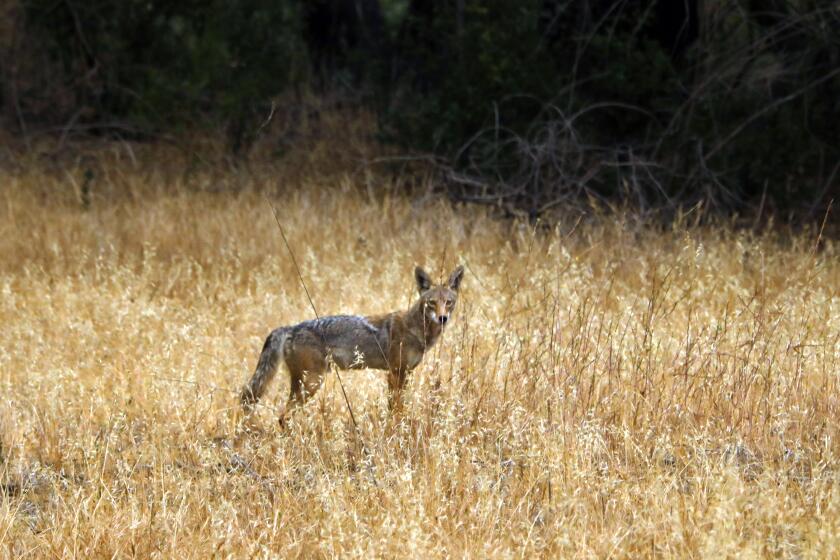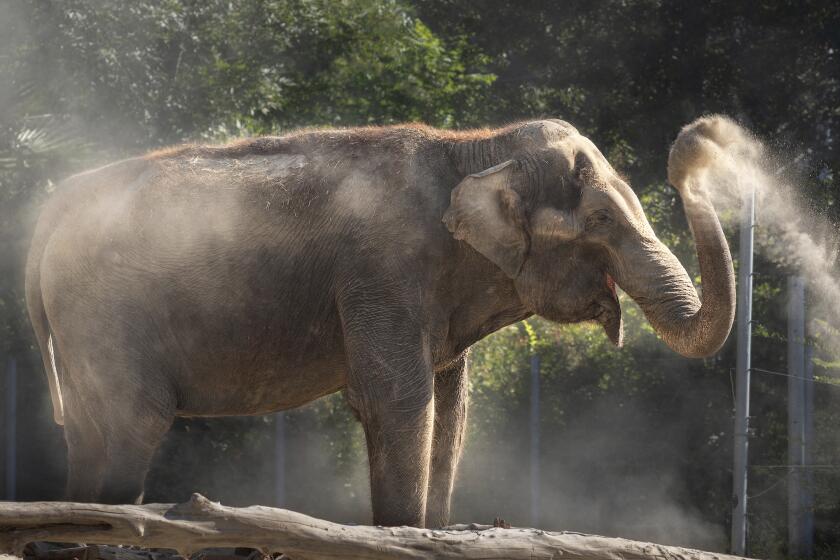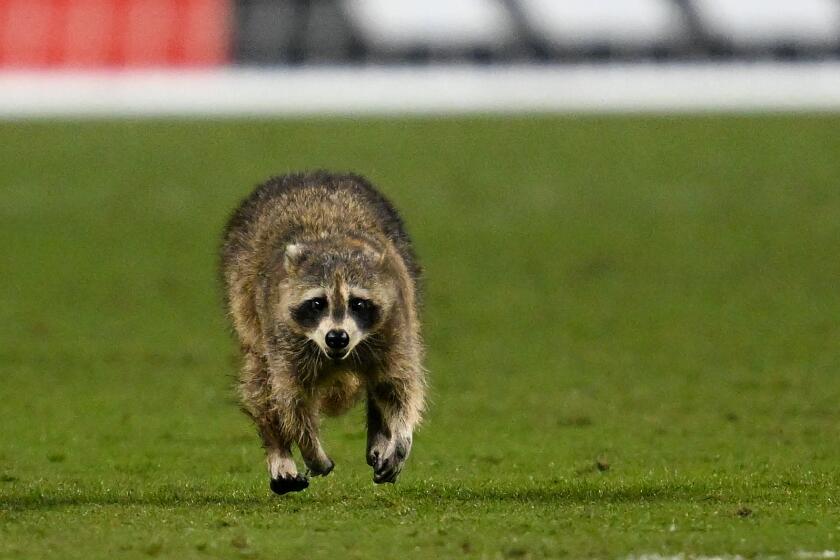Labrador’s Own Coat Enough for Snow Trip
Q: We have a healthy 7-year-old Labrador that spends most of her time indoors. As a result, she does not have a heavy coat. We have the opportunity to spend many weekends in the mountains and want to take her with us. I’m worried about how she will handle the sudden change in temperature. What effect will the ice and snow have on her paws? What signs do I look for to know if she’s getting too cold? How long should she be allowed to play in the snow at one time? We have already bought her a coat and boots.
Connie Naranjo, Garden Grove
A: Even in Southern California, as winter approaches a dog’s coat changes and becomes thicker. Your dog should do quite well as long as you don’t overexercise her at the higher elevations or allow her to sit outside if wet from playing in the snow. Let her adjust to the colder weather by taking her for long walks. Just like humans, when dogs become too cold, their activity slows down and they shiver.
In addition, be sure to towel-dry her after playing in the snow and keep her off concrete floors. Make sure she is not exposed to drafts and give her a heavy towel, blanket or rug to sleep on. Make sure she has plenty of fresh water and plenty of food, since she will probably burn up a lot of extra energy. Also, be sure to check her paws for cuts or abrasions; snow does hide sharp rocks, cans and bottles or broken glass.
Most of all, just have a great time with her.
Q: I have an 8-month-old Dalmatian whose urine is causing brown spots to appear in my lawn despite frequent watering. The problem is much worse than I have experienced in the past with different breeds. Is there anything I can do to lower the acidity of the dog’s urine, which I assume is the cause of the problem? Or, is there some special treatment for the lawn?
Jerry Dworkin,
Irvine
A: A dog’s urine is normally on the acidic side (around pH 6 to 6.5), and adding urine acidifiers may not make any difference. Some dogs do develop urinary infections, but that shouldn’t be the case in an 8-month-old. You should have your dog checked by your veterinarian. Also, check with your garden shop about the lawn. There are ways of treating it.
Q: We have a 6-month-old West Highland and are thinking of breeding her this year. I have several friends who have told me not to breed her on her first cycle because it would stunt her growth and development. Her mother was bred on her first cycle and did not appear to have any difficulties. What do you think?
Mrs. Toni Almis,
Cypress
A: I do not recommend breeding your pet on her first estrus cycle because she is still developing into an adult dog and does not need the added stress of pregnancy. Although many dogs and cats do have litters early, their growth may be slowed and the development of bones and muscle tissue are affected as nutrients are transferred to the development of the puppies. Do her a favor and wait until her second cycle.
Got a question about your pet? Write to Dr. Glenn Ericson, Ask the Vet, Orange County Life, The Times, 1375 Sunflower Ave., Costa Mesa, Calif. 92626. Ericson, a practicing Orange County veterinarian, is president of the Southern California Veterinary Medical Assn.



